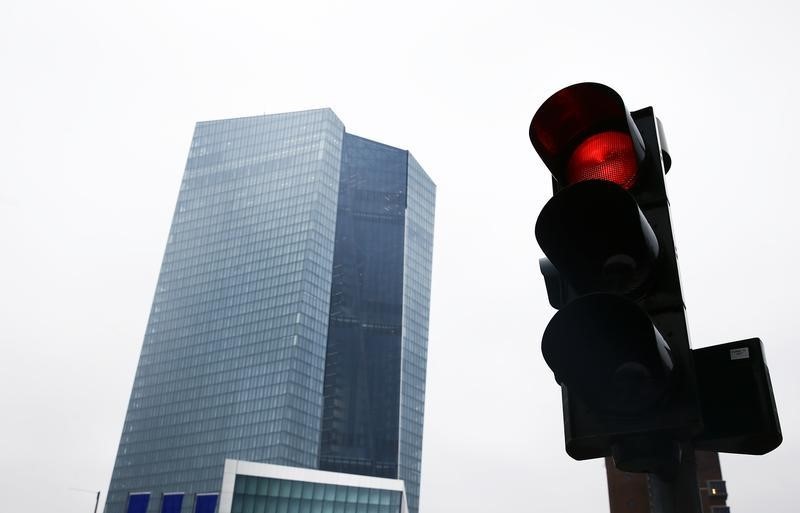By John Geddie
LONDON (Reuters) - Investors see a high chance of the European Central Bank cutting interest rates again this year as Britain's potential exit from the EU clouds the bloc's near-term economic prospects.
ECB head Mario Draghi said in March he did not anticipate further rate cuts -- one of the easing tools the ECB has used to try and shore up the bloc's recovery -- would be necessary. But money market trading suggests investors anticipate another about-turn.
Forward Eonia bank-to-bank lending rates dated for the ECB's meeting on Dec. 8 fell to minus 0.41 percent on Wednesday, 8 basis points below the overnight rate of minus 0.33 percent.
This suggests roughly an 80 percent chance of a further 10 basis point cut to the ECB's deposit rate by the end of the year.
These forward rates also give around a 50 percent chance for a cut by September, and a 30 percent chance for lower rates at its July meeting.
Long-term inflation expectations
"The prospect of Brexit is adding to macroeconomic concerns ... and many investors are now looking for further easing from the ECB," Commerzbank (DE:CBKG) rates strategist Rainer Guntermann said.
Reuters reported this week that the ECB would publicly pledge to backstop financial markets by maintaining market liquidity in tandem with the Bank of England should Britain vote to leave the European Union.
After the ECB lowered its deposit rate to minus 0.40 percent from minus 0.30 percent in March, Draghi signalled an end to cuts amid concerns that the measure -- aimed at encouraging lending by punishing banks that hold excess cash -- was damaging profitability in the financial sector.
But the ECB has changed its mind before.
In December 2014, Draghi said that rates had reached the lower bound, only to cut them 12 months later and then again in March this year.
Two-year German government bond yields, another indicator of market rate expectations, are trading at minus 0.57 percent

(This story adds missing word minus in third paragraph)